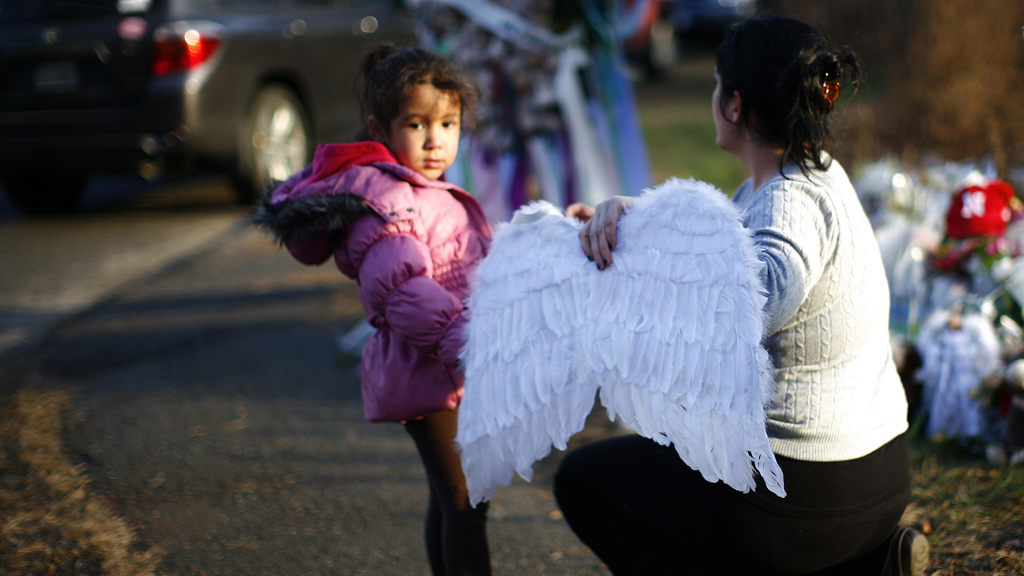What made Adam Lanza kill 27 people?
Shy, awkward, lonely: the picture emerging of gunman Adam Lanza is all too familiar. But do we really know what makes people carry out such horrendous shooting sprees? Channel 4 News investigates.

As soon as Adam Lanza was identified as the man who killed 27 people, the accusations of mental disorder and unusual personality traits began. His brother Ryan told authorities soon after the shooting that he had a “personality disorder”, leading many to cast the 20-year-old gunman as mentally ill or autistic.
Ryan Lanza was not alone in his characterisation of a socially awkward 20-year-old with mental health problems. Dawn, a neighbour of the Lanza family, told Channel 4 News: “He’s always been a very disturbed kid. In fourth grade, my daughter was in his class and they had to write something good about themselves, and he wrote: ‘I’m lonely, I’m angry’.”
Classmates commented with retrospect that his problems were apparent at school. He was small, shy and quiet, with few friends – but a hard worker, and achieved well academically. As director of security for Newtown board of education for 16 years, Richard Novia came into contact with Lanza almost every day. “Adam had mental disorders. That’s pretty much out there already. Asperger’s syndrome was one we knew about,” he told the Press Association.
‘Time to talk’ about mental illness
Mr Novia also ran a technology club, of which Lanza was a member. “He often had little episodes like that where he would just shut down and pull within himself. Getting him back out of that would be challenging,” he added.
The description of Lanza fits into a similar “We need to talk about Kevin” narrative of other mass killers – and those who know the perpetrators are often quick to judge their crimes as an inevitable consequence of previously unstable behaviour. When the mother of James Holmes, who opened fire at a Batman screening in Colerado, was told of what her son had done, she was reportedly under no illusion that her son was responsible.
Some have welcomed what they see as an opening-up of the debate about the extent to which mental illness can impact people’s behaviour. A blog post entitled “I am Adam Lanza’s mother” – detailing the experiences of a mother trying to look after her gifted, but mentally unstable and violent, son – has gone viral. In it, the writer Liza Long calls for a national conversation about mental health.
“In the wake of another horrific national tragedy, it’s easy to talk about guns. But it’s time to talk about mental illness,” she writes.

‘Jumping to conclusions’
However, others have urged caution in being too deterministic about certain behaviour. And some mental health campaigners have been disappointed by the presumption that mental health problems are responsible for Lanza’s actions. The charit Mind told Channel 4 News that people with mental health problems are no more likely than the general population to commit a violent crime – and pointed out that they are much more likely to be the victim of a violent crime than the general population.
The National Autistic Society also released a statement pointing out that autism, of which Asperger syndrome is a form, affects around one in every 100 people in the UK. “Unconfirmed reports that the perpetrator had Asperger syndrome, a form of autism, have been circulating,” the statement read, “and we would urge everyone not to jump to conclusions or to conflate the actions of one disturbed individual with a whole section of society, or to make judgments about people with the condition.”
Media attention
Another possible theory about why perpetrators carry out such actions is for attention. “If the question is why do these people do it? The answer is to get attention, to be important,” said Frank Zimring, law professor at Berkeley university and specialist on American youth violence.
He added that such close media scrutiny could be part of the motivation for the “unbalanced and ambitious” to carry out such atrocities. “In that limited respect the attention we pay to these behaviours becomes part of the motive for people choosing to act in that way,” he told Voice of Russia radio in July. “It’s crazy, but it’s predicting.”
In the wake of the shooting of 20 young children, the search for explanations will no doubt continue. But a definitive answer will take much longer to emerge.